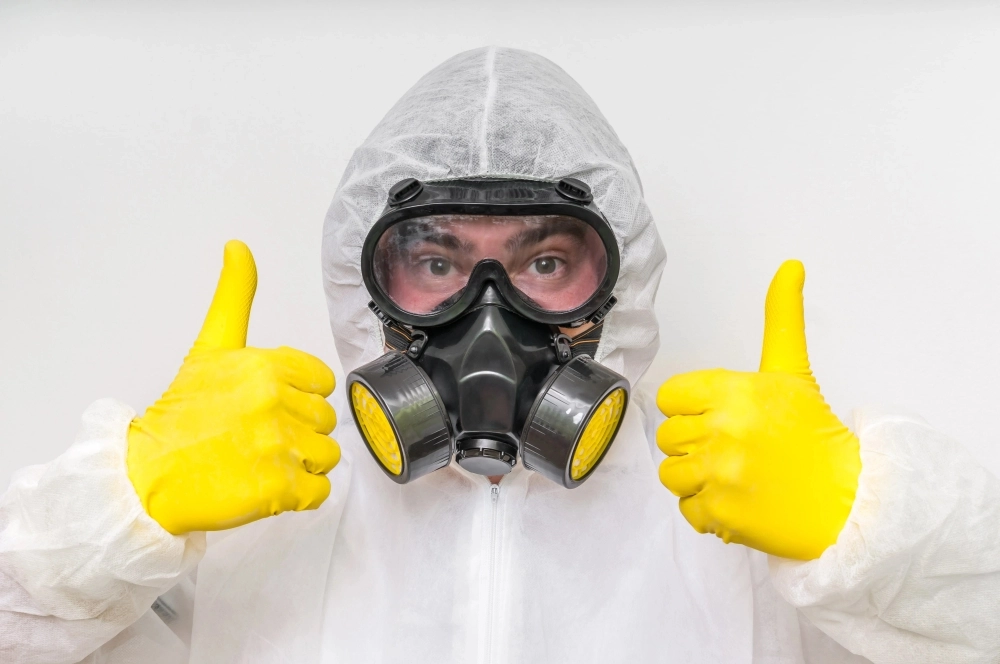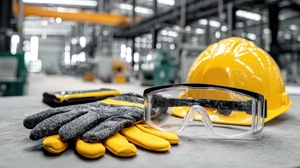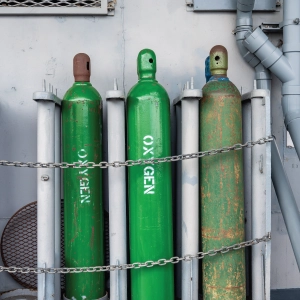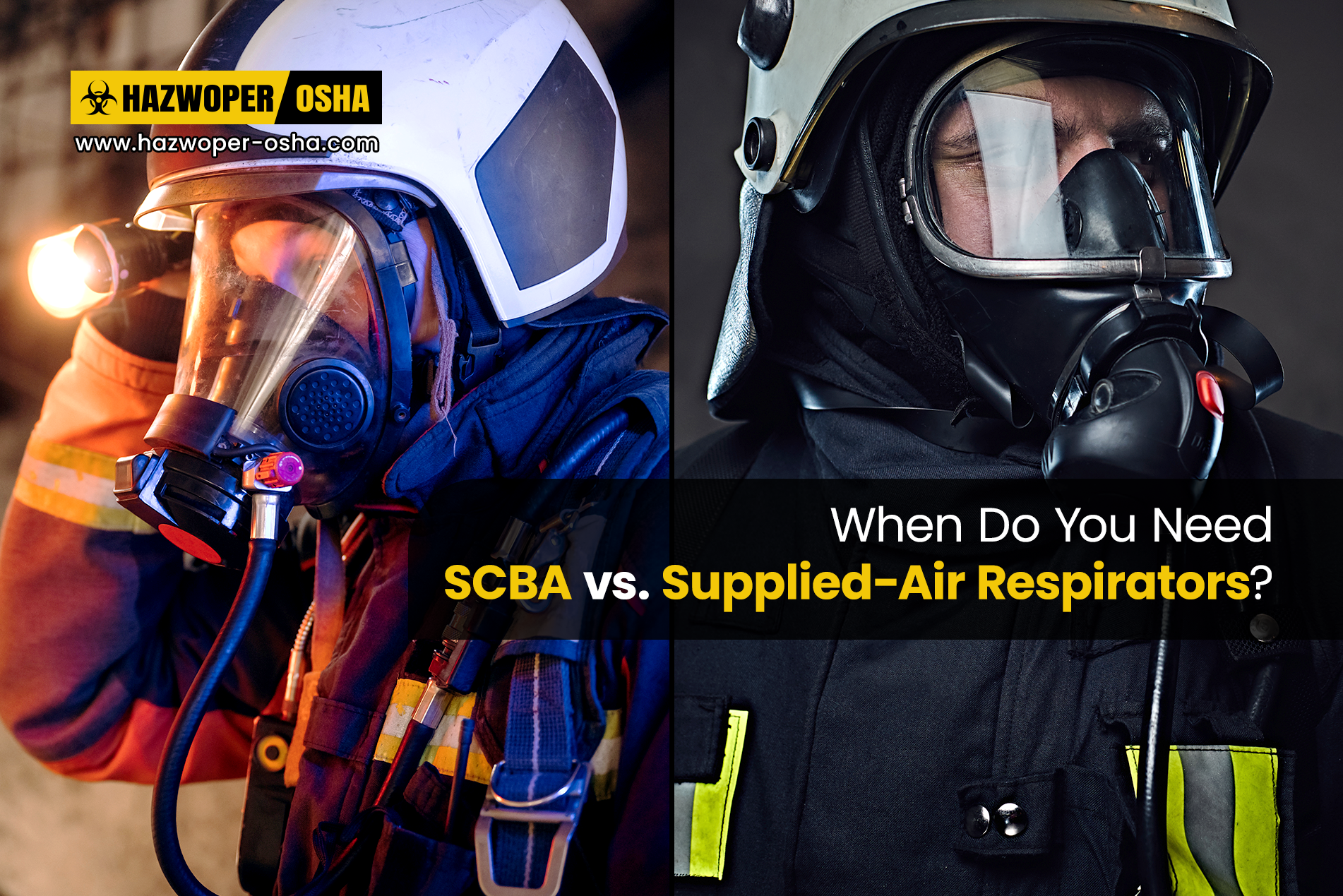Is Respirator Fit Testing the Key to Effective Respiratory Protection?

Many workplaces require employees to wear respiratory protection. These range from oil and gas companies, hazardous waste operations, and construction sites to industrial factories and chemical manufacturers. Additionally, respiratory protection is also required to be worn by workers involved in restoration work and mold remediation, as well as medical professionals.
As such a large part of the workforce requires respiratory protection, OSHA recognizing the need for regulating the use of respirators and putting in place best practices for respiratory protection, has developed a Standard for Respiratory Protection 49 CFR 1910.134.
According to OSHA, several steps must be followed when requiring employees to wear respiratory protection. One critical element of this is to use the right type of respirator for the right type of hazard. Next, employees must undergo a medical examination to ensure they are healthy enough to wear a respirator while carrying out work tasks. Once they pass the medical surveillance, it is equally important to fit test respirators for individual workers who are required to use respiratory protection to safeguard against airborne pathogens, hazardous gases, vapors, and dusts.
What is Fit Testing?
As the name suggests, fit testing is the process of determining if the chosen respirator type and style ‘fits’, that is suitable for, the wearer. Part of the fit-testing process is to determine if the respirator forms a seal on the user’s face as not having a good seal would result in inadequate protection for the wearer and resulting in respiratory protection being less effective than expected.
When Should Respirator Fit Testing Take Place?
According to OSHA’s Respiratory Protection Standard, employers must fit test respirators in employees in the below three instances.
- Before an employee’s initial use of a respirator in a work environment.
- Whenever a new or different facepiece or respiratory equipment is used.
- Once, a year, thereafter, to ensure everything is as it should be, and the respirator still fits the worker as it did during the previous fit test.
Additionally, fit testing should also be performed in instances where wearers have either gained or lost weight, after any major dental work or facial surgery which could have changed the shape of the face, or in case of scarring on the face around the seal area.
Is Respirator Fit Testing Mandatory?
Fit testing is mandatory for all positive or negative pressure respirators and tight-fitting facepiece respirators.
As part of the respirator fit testing process, employees must be given the respiratory equipment in advance and shown how to use it, that is, put it on and take it off. Employees are also given the opportunity to choose the size and weight of the equipment components, so the fit is comfortable. Only after the employee chooses and feels comfortable with wearing the respirator is a seal check performed. This is the critical aspect of Respirator Fit Testing and the basis for whether or not an employee can use the chosen respirator.
Note, if during the respirator fit testing, it is found that the respirator seal to the face is not tight enough, then the employee must choose a different style and size of respiratory equipment that would better fit with their face structure.
Respirator Fit Testing – Two Types
There are two types used to fit test if the respirator seal is proper on the worker. These are:
- Qualitative fit testing (QLFT)
- Quantitative fit testing (QNFT)
Qualitative Fit Testing
Qualitative fit testing is relatively simple. It is a pass-or-fail test. The QLFT does not measure the leakage of a respirator, it simply identifies that a leak is present.
During a quantitative fit test, employees are required to wear a respirator and stand in an enclosed area. The person conducting the test will introduce different ‘agents’ into this sealed booth and the employee will use his/her sense of taste and smell or reaction to a known (non-harmful) irritant to identify if the respirator seal is achieved.
OSHA approves four protocols for qualitative fit testing:
- Isoamyl Acetate Protocol – smells like banana
- Saccharin Solution Aerosol Protocol – sweet taste
- Bitrex™ (Denatonium Benzoate) Solution Aerosol Qualitative Fit Test Protocol – bitter taste
- Irritant Smoke (Stannic Chloride) Protocol – causes coughing and has a smoky smell
If the employee can smell or taste the ‘agent’ introduced, then the respirator fit test is a failure. And, if the employee does not smell or taste any of the test agents introduced during the testing process, they pass the qualitative fit test.
If an employee fails the qualitative fit test, then they must choose a different respirator and try the test again.
Quantitative Fit Testing
A quantitative fit test is based on a numerical score that determines how well a respirator fits an individual by measuring the amount of leakage into the respirator. Quantitative fit testing does not depend on the human sense of smell and taste.
During a QNFT, sampling probes or other measuring devices are placed inside and outside the respirator facepiece to identify the leakage amount.
There are three types of quantitative fit testing protocols as recommended by OSHA.
- Generated Aerosol Quantitative Fit Testing Protocol - Employees must wear a respirator while the aerosol is released into a testing chamber. Measurements are taken of the concentration of the aerosol particles both inside the test chamber and inside the respirator to determine leakage.
- Ambient Aerosol Condensation Nuclei Counter (CNC) Quantitative Fit Testing Protocol – Lasers are used to measure the ambient aerosol concentration both inside and outside of the facepiece.
- Controlled Negative Pressure (CNP) Quantitative Fit Testing Protocol – This method uses an instrument to exhaust air from inside the facepiece to maintain a constant negative pressure. The measurement of the exhaust stream required to maintain a constant negative pressure produces a measure of leakage into the facepiece.
Employees and employers must strictly follow the protocols recommended by OSHA for both qualitative and quantitative fit testing requirements. Appendix A of OSHA’s Respiratory Protection Standard, 29 CFR 1910.134, provides complete details on all mandatory fit testing methods and requirements. To know more, click here.

|
S.No. |
Feature |
Qualitative Fit Testing (QLFT) |
Quantitative Fit Testing (QNFT) |
|
1 |
Test Type |
Pass or fail based on user's senses |
Numeric measurement of leakage |
|
2 |
Dependence |
Relies on taste, smell, or irritation response |
Uses mechanical instruments to detect leakage |
|
3 |
Accuracy |
Less accurate; only detects presence of leaks |
More accurate; measures exact leakage levels |
|
4 |
Testing Agents |
Banana scent, sweet taste, bitter taste, or smoke irritation |
Generated aerosols, laser-measured aerosols, or controlled negative pressure |
|
5 |
OSHA-Approved Protocols |
4 protocols |
3 protocols |
|
6 |
Sense Involvement |
Requires employee to detect agent using senses |
No involvement of taste or smell |
|
7 |
Equipment Required |
Simple test hood and agent |
Specialized measuring instruments and probes |
|
8 |
Suitable For |
Only for negative pressure and tight-fitting respirators |
All tight-fitting respirators |
|
9 |
Test Environment |
Enclosed area with introduced agents |
Sealed chamber or equipment-based environment |
|
10 |
Failure Protocol |
Try a different respirator and retest |
Choose another respirator based on numerical result |
Additional Testing
In addition to the qualitative and quantitative fit testing methods explained briefly above, OSHA respiratory protection regulations also require employees to perform several different exercises for 1 minute each. These exercises support employees wearing respirators to ensure they are comfortable with the respiratory protection equipment chosen by them. These are:
- To practice normal breathing,
- To breathe deeply,
- To slowly turn the head from side to side,
- To slowly move the head up and down,
- To talk out loud,
- To smile or frown,
- To bend at the waist, and
- To job in place.
Training Employees to Understand Respiratory Protection
Post-COVID Updates to OSHA Fit Testing Protocols
In response to the COVID-19 pandemic, OSHA issued temporary guidance allowing flexibility in fit testing requirements due to respirator shortages. However, employers were still expected to make good-faith efforts to comply and prioritize worker safety. Post-pandemic, OSHA reinforced the need for strict adherence to fit testing protocols, especially in healthcare and high-risk industries, emphasizing the critical role of respirator integrity in protecting against airborne pathogens.
Workplaces that require employees to wear respiratory protection must provide training to employees to understand OSHA’s Respiratory Protection Standard.
Employees working in hazardous waste operations or emergency response have access to the sections on respiratory protection as part of our HAZWOPER 40-Hour Training, HAZWOPER 24-Hour Training, and the 8-Hour HAZWOPER Refresher Training.
Employees working in TSD facilities receive detailed information on respiratory protection when they enroll in our OSHA 24-Hour HAZWOPER – RCRA TSD Operations Training course.
In addition, employers must also provide employees with on-the-job and hands-on training on using and storing respiratory equipment.

 EN |
EN |  ES
ES






























































































































